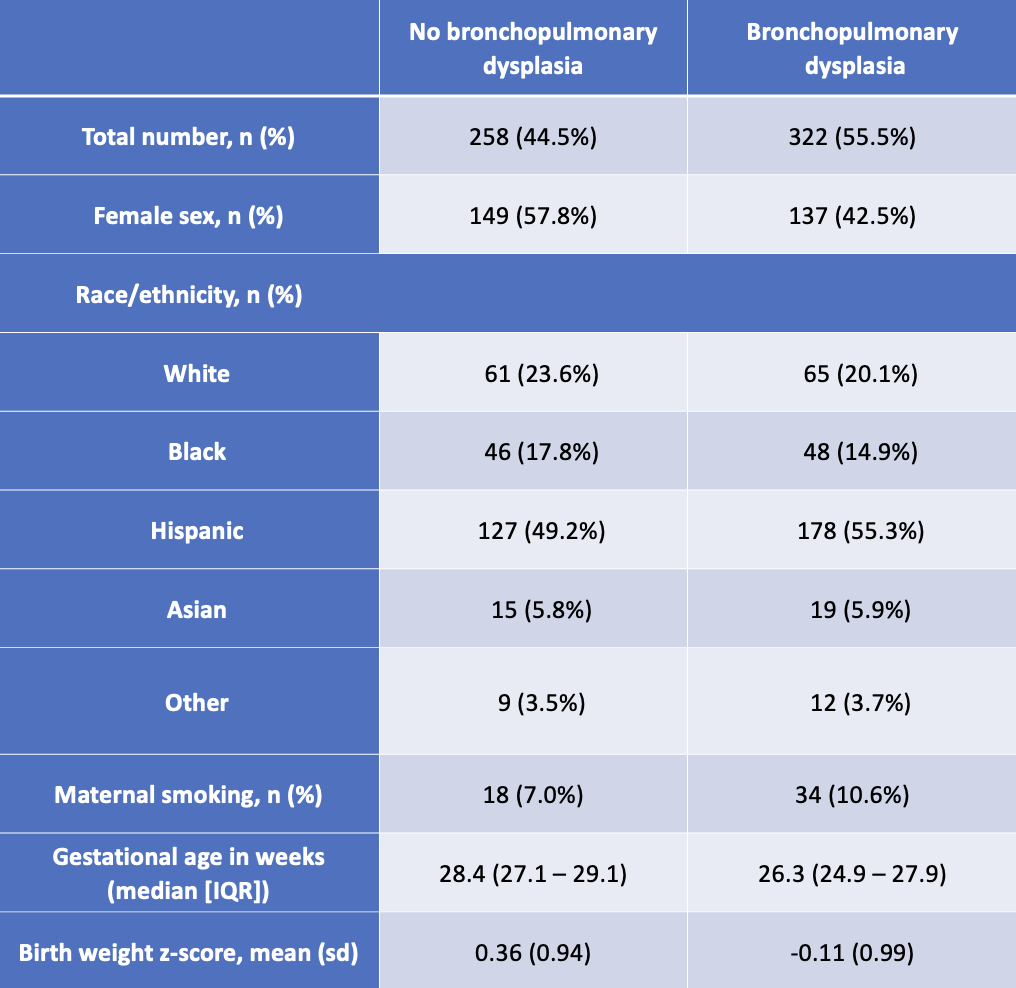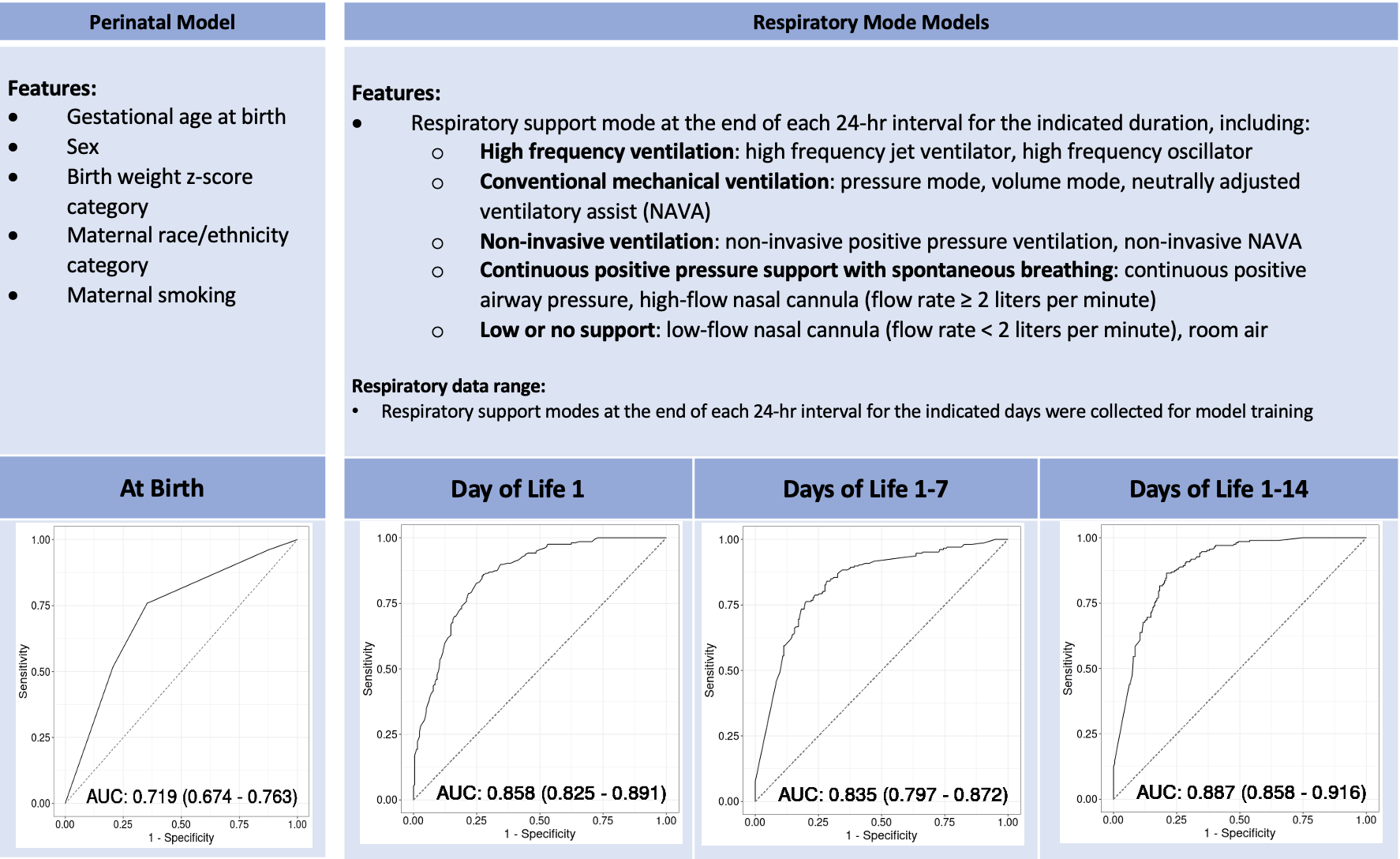Neonatal General
Category: Abstract Submission
Neonatology General 11: Lung
364 - Machine Learning of Respiratory Outcome Predictions in Premature Infants Born at < 30 Weeks Gestation Based on Developmental Origins of Bronchopulmonary Dysplasia
Monday, April 25, 2022
3:30 PM - 6:00 PM US MT
Poster Number: 364
Publication Number: 364.440
Publication Number: 364.440
John B. C. Tan, Loma Linda University Children's Hospital, Riverside, CA, United States; Andrew Pham, University of California, San Diego, La Jolla, CA, United States; Rebekah M. Leigh, Loma Linda University School of Medicine, Redlands, CA, United States; Fu-Sheng Chou, Loma Linda University School of Medicine, Loma Linda, CA, United States

Srinandini S. Rao, BA, DO
Neonatology-Perinatology Fellow
Loma Linda University Children's Hospital
Pomona, California, United States
Presenting Author(s)
Background: Despite significant improvement in overall survival and morbidities of extremely low gestational age infants over the past decade, bronchopulmonary dysplasia (BPD) remains a significant challenge to neonatal providers. Multiple studies suggest BPD is a multifactorial disease with a significant influence from maternal factors and antenatal insults. Additionally, distinct patterns of FiO2 trajectories in the immediate postnatal life with their associated probabilities of BPD have been characterized. These findings point towards the developmental origins of BPD being proportionate to the degree of insult during fetal lung development and the possibility to restore normal developmental trajectory.
Objective: We developed random forest prediction models for BPD based on the concept of the developmental origins of BPD by combining perinatal data and respiratory support data in the first 1, 7, and 14 days of life.
Design/Methods: We conducted a single-center retrospective study from 2013 to 2019. Eligible babies were randomly split into a training and a testing dataset with a 5:1 ratio. Five perinatal features and respiratory mode was extracted directly from electronic medical records database. Notably, respiratory data was collected at the end of each 24-hr interval for 14 intervals since birth. BPD was defined based on the 2016 NICHD workshop recommendations. A random forest (RF) algorithm was used to train perinatal and respiratory data separately. An ensemble model was then developed by using generalized linear regression. Receiver’s operating characteristics (ROC) were used for performance assessment.
Results: We identified 580 babies born at less than 30 weeks' gestation with all 14 days of respiratory data available for prediction modeling. Demographic characteristics are summarized in Table 1. Input features and model performance for each RF model developed using perinatal data and respiratory data are available in Figure 1. In the final ensemble models including 1, 7, and 14 days of respiratory data, the ROC area under the curve were 0.876, 0.893, 0.909 for the training dataset, and 0.833, 0.849, 0.863 for the testing dataset, respectively (Figure 2).Conclusion(s): The ensemble prediction model performances were reasonably satisfying, reaffirming the concept of the developmental origins of BPD. The prediction tool may provide additional information to guide implementation of clinical measures for BPD prevention during the early postnatal stage.
Table 1 Perinatal demographic information for model development
Perinatal demographic information for model development
Figure 1 Features included in each random forest model training using randomly selected 80% of the data (n=465) and the associated receiver’s operating characteristics (ROC) area under the curve (AUC) with 95% confidence interval using the Delong method
Features included in each random forest model training using randomly selected 80% of the data (n=465) and the associated receiver’s operating characteristics (ROC) area under the curve (AUC) with 95% confidence interval using the Delong method
Objective: We developed random forest prediction models for BPD based on the concept of the developmental origins of BPD by combining perinatal data and respiratory support data in the first 1, 7, and 14 days of life.
Design/Methods: We conducted a single-center retrospective study from 2013 to 2019. Eligible babies were randomly split into a training and a testing dataset with a 5:1 ratio. Five perinatal features and respiratory mode was extracted directly from electronic medical records database. Notably, respiratory data was collected at the end of each 24-hr interval for 14 intervals since birth. BPD was defined based on the 2016 NICHD workshop recommendations. A random forest (RF) algorithm was used to train perinatal and respiratory data separately. An ensemble model was then developed by using generalized linear regression. Receiver’s operating characteristics (ROC) were used for performance assessment.
Results: We identified 580 babies born at less than 30 weeks' gestation with all 14 days of respiratory data available for prediction modeling. Demographic characteristics are summarized in Table 1. Input features and model performance for each RF model developed using perinatal data and respiratory data are available in Figure 1. In the final ensemble models including 1, 7, and 14 days of respiratory data, the ROC area under the curve were 0.876, 0.893, 0.909 for the training dataset, and 0.833, 0.849, 0.863 for the testing dataset, respectively (Figure 2).Conclusion(s): The ensemble prediction model performances were reasonably satisfying, reaffirming the concept of the developmental origins of BPD. The prediction tool may provide additional information to guide implementation of clinical measures for BPD prevention during the early postnatal stage.
Table 1
 Perinatal demographic information for model development
Perinatal demographic information for model developmentFigure 1
 Features included in each random forest model training using randomly selected 80% of the data (n=465) and the associated receiver’s operating characteristics (ROC) area under the curve (AUC) with 95% confidence interval using the Delong method
Features included in each random forest model training using randomly selected 80% of the data (n=465) and the associated receiver’s operating characteristics (ROC) area under the curve (AUC) with 95% confidence interval using the Delong method